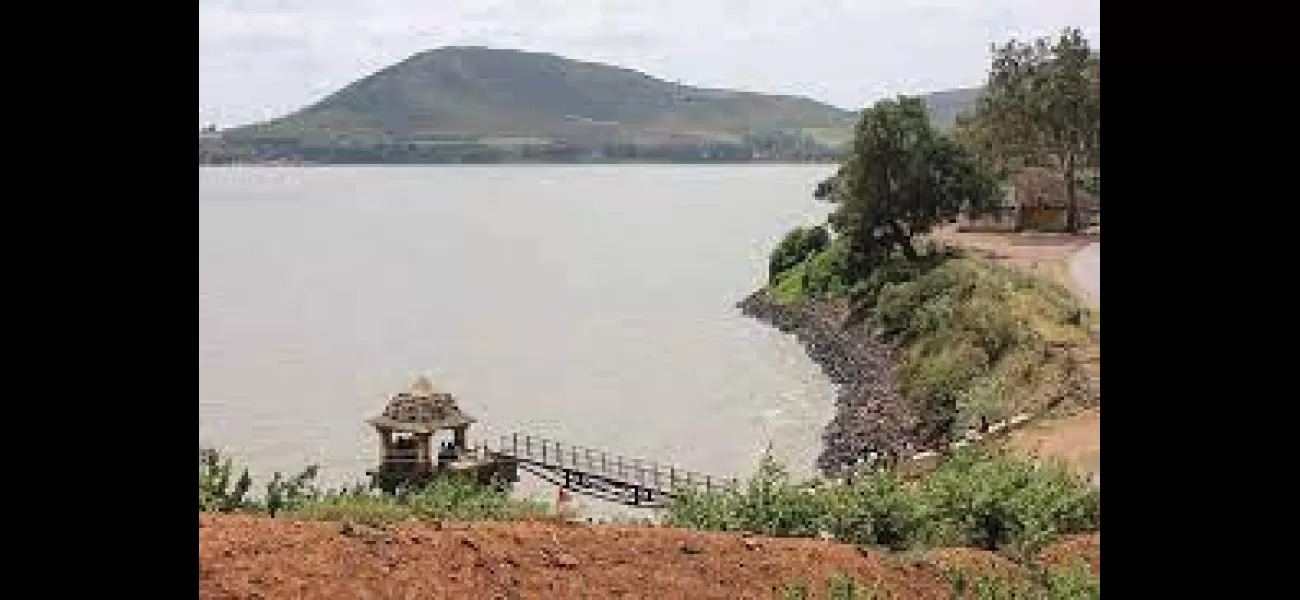India's reservoirs are facing water scarcity, with the southern region being the most affected as water levels drop to 16%.
The Central Water Commission has reported a significant decrease in reservoir storage across India, now at 28% compared to 35% last year.
May 3rd 2024.

The Central Water Commission has recently reported a concerning decrease in reservoir storage across India. This decline is evident in the current storage levels, which are at 28% of the total capacity, down from 35% during the same period last year. The CWC regularly monitors 150 water reservoirs and releases a weekly status bulletin to keep track of live water storage. The southern region, which includes Andhra Pradesh, Telangana, Karnataka, Kerala, and Tamil Nadu, is currently facing the most significant impact.
In fact, the bulletin has revealed that the total live storage available in the 42 monitored reservoirs in the southern region is only 16% of their total capacity. This is a significant drop from last year's storage levels, which were at 28%, and even lower than the ten-year average of 22%. The latest Reservoir Storage bulletin by the CWC also highlighted concerning data for the week ending on May 2, 2024.
According to the report, the total live storage in all 150 monitored reservoirs was only 28% of their combined live storage capacity, which is a mere 50.432 billion cubic meters. This is a substantial decrease compared to last year's storage levels, which were at 81% of the total capacity, amounting to 62.212 BCM. It is also significantly lower than the ten-year average of 96% of the average storage capacity. This news is particularly alarming as it has significant implications for agriculture, hydroelectric power generation, and overall water resource management.
Further analysis of the data shows disparities in reservoir storage across different regions of the country. In the northern region, which includes states like Himachal Pradesh, Punjab, and Rajasthan, the live storage available in monitored reservoirs is only 31% of the total capacity, which is below both last year's levels and the ten-year average. On the other hand, the eastern region, which comprises states like Assam, Jharkhand, and Odisha, has a more positive outlook with 36% of the total capacity in live storage, surpassing both last year's levels and the ten-year average.
The bulletin also highlighted specific reservoirs and river systems that have varying storage conditions. Some areas, such as the Subarnarekha, Brahmaputra, and Narmada river basins, have storage levels better than normal, while others like the Krishna and Cauvery river basins are facing significant deficiencies in storage. The east flowing rivers between Mahanadi and Pennar, as well as those between Pennar and Kanyakumari, are also experiencing high levels of deficiency. Overall, the CWC's bulletin has underscored the notable deficit in reservoir storage nationwide, calling for immediate attention to manage this critical resource effectively.
In fact, the bulletin has revealed that the total live storage available in the 42 monitored reservoirs in the southern region is only 16% of their total capacity. This is a significant drop from last year's storage levels, which were at 28%, and even lower than the ten-year average of 22%. The latest Reservoir Storage bulletin by the CWC also highlighted concerning data for the week ending on May 2, 2024.
According to the report, the total live storage in all 150 monitored reservoirs was only 28% of their combined live storage capacity, which is a mere 50.432 billion cubic meters. This is a substantial decrease compared to last year's storage levels, which were at 81% of the total capacity, amounting to 62.212 BCM. It is also significantly lower than the ten-year average of 96% of the average storage capacity. This news is particularly alarming as it has significant implications for agriculture, hydroelectric power generation, and overall water resource management.
Further analysis of the data shows disparities in reservoir storage across different regions of the country. In the northern region, which includes states like Himachal Pradesh, Punjab, and Rajasthan, the live storage available in monitored reservoirs is only 31% of the total capacity, which is below both last year's levels and the ten-year average. On the other hand, the eastern region, which comprises states like Assam, Jharkhand, and Odisha, has a more positive outlook with 36% of the total capacity in live storage, surpassing both last year's levels and the ten-year average.
The bulletin also highlighted specific reservoirs and river systems that have varying storage conditions. Some areas, such as the Subarnarekha, Brahmaputra, and Narmada river basins, have storage levels better than normal, while others like the Krishna and Cauvery river basins are facing significant deficiencies in storage. The east flowing rivers between Mahanadi and Pennar, as well as those between Pennar and Kanyakumari, are also experiencing high levels of deficiency. Overall, the CWC's bulletin has underscored the notable deficit in reservoir storage nationwide, calling for immediate attention to manage this critical resource effectively.
[This article has been trending online recently and has been generated with AI. Your feed is customized.]
[Generative AI is experimental.]
0
0
Submit Comment





